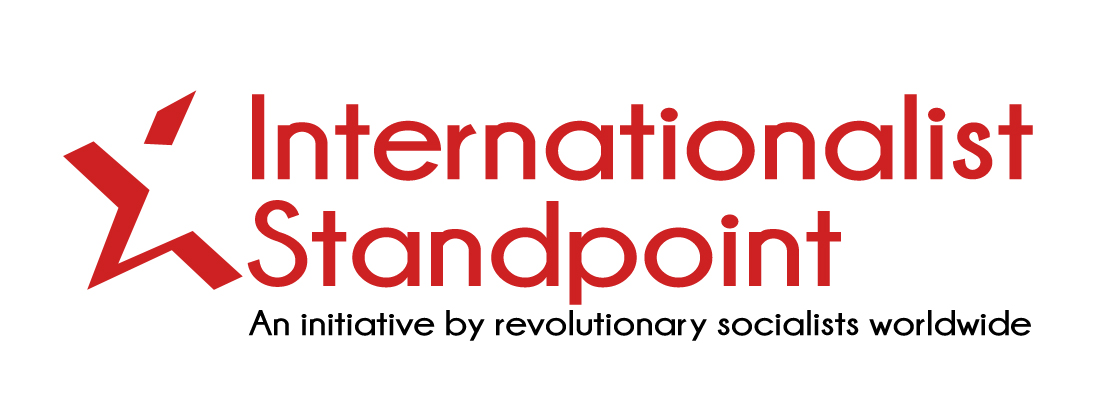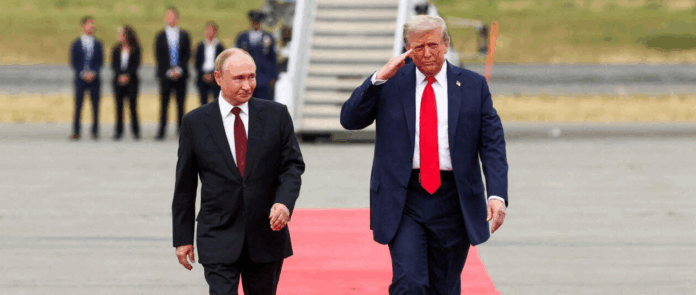“I think he wants to make a deal for me. Do you understand that? As crazy as it sounds.”
Trump said this to Macron when he thought the microphones were off, on the sidelines of a meeting at the White House. He was referring to Putin.
Regardless of Trump’s delusions of grandeur, the fact is that he has recently been trying to create the impression that a peace agreement in Ukraine is imminent. Following his meetings with Putin in Alaska, and with Zelensky and European leaders at the White House, the impression has been created that the matter is “nearing closure.”
The West’s Waterloo moment?
The truth is that Trump is approaching the issue more realistically than his predecessor. After three and a half years of war, the situation is as follows:
- There are no reliable figures on the number of casualties, as both sides downplay their own losses and exaggerate those of the enemy. However, it appears that around 100,000 Russian soldiers have been killed, compared to around 70,000 Ukrainian soldiers (Ukraine has a population roughly four times smaller than Russia). Tens of thousands of civilians have also been killed, mainly on the Ukrainian side, while Ukrainian refugees number in the millions.
- Despite unprecedented sanctions from Western governments, the Russian economy only went into a slight recession in the first year, and then managed to adapt its operating model by trading with other countries in their own currencies. Ukraine, on the other hand, suffered a huge 30% recession in the first year and is only surviving because Western governments are financing it with massive sums of money.
- Not only does Russia have a significantly larger number of soldiers, it also has a much deeper reservoir of potential reservists. While both armies face morale issues, military analysts have recently warned that the Ukrainian army lacks the personnel required to sustain the war effort.
- The “international isolation” of Russia that the West sought to impose has failed. Essentially, the only countries that joined the “coalition of the willing” against Russia were the US, the EU, and their close allies such as Japan, Canada and Australia. Most countries remained neutral — a situation unprecedented for what had previously been an unchallenged Western hegemony.
- Following the initial attack on Kyiv and the subsequent halt and retreat of the Russian army, the front line stabilised in eastern Ukraine, in areas with a Russian-speaking majority. Despite Ukraine’s boasts about its counteroffensive—which was not very successful—and despite the unprecedented support the Ukrainian army received in military aid and other assistance, it has been unable to inflict significant damage on the frontlines. Instead, in recent months, Russia has been making slow but steady progress in occupying new territory.
Clearly, this situation can no longer be hidden by Western propaganda. This is reflected in the debate over whether to first seek a ceasefire followed by peace negotiations, or to move directly to negotiations aiming at a comprehensive agreement. Zelensky and the Europeans are constantly raising the issue of a ceasefire, but Putin refuses. He has no reason to agree to one while the situation on the front line favours him and time is on his side. Of course, the West would do the same if it were in his position.
Nothing has been decided yet
Thus, after the initial optimistic announcements came the revelation of the problems. Trump’s attempt to open direct talks with Putin represents a significant change in the West’s approach so far. However, this does not mean that such talks will easily lead to an agreement, given the numerous unresolved issues.
Zelensky and the Europeans want any agreement to include “Article 5-type guarantees,” i.e. commitments similar to those set out in Article 5 of the NATO Charter. This article stipulates that if one NATO member is attacked, the others will come to its aid. Meanwhile, Macron and Starmer discussed the possibility of deploying European troops in Ukraine with US air support. There has also been much discussion about building a strong and capable Ukrainian army.
All of the above are categorically rejected by Putin. After all, these were the very reasons that led to the start of this war. Is it realistic to expect them to be accepted, particularly given that Russia currently holds the upper hand?
Conversely, Trump has proposed a “land swap,” whereby Ukraine would cede territory in exchange for an end to the war. Zelensky and the Europeans have ruled out this possibility. In other words, they insist that Russia must withdraw from the occupied territories—areas mainly inhabited by Russian-speaking populations and seized at great cost. Clearly, this expectation is delusional, but in any case, it will be very difficult for the Ukrainian government to agree to cede territory to Russia after paying such an enormous price in a war fought precisely to prevent that outcome.
Based on this situation, Russian Foreign Minister Lavrov stated that while a possible meeting between Zelensky and Putin is on the table, it should only take place once progress has been made on these issues. After all, bilateral negotiations have not even begun yet, and everything remains uncertain.
Crescendo of Hypocrisy
Meanwhile, EU leaders have engaged in a crescendo of hypocrisy. They say:
- “We must not accept the surrender of parts of Ukraine to Russia because this violates international law.” Really? Are the same governments that support Israel in every possible way — a country that has annexed territories from Palestine, Egypt and Syria — really talking about international law? Do leaders of countries that have invaded Iraq based on forged claims about relations with terrorism and weapons of mass destruction have the nerve to talk about “international law”?
- “We cannot trust Putin because he has been indicted by the International Criminal Court for war crimes.” At the same time, they are shaking hands with Netanyahu, who has also been indicted by the very same court.
- “We cannot turn a blind eye to the genocide being committed by Russia in Ukraine, where thousands of children have fallen victim to the war and are being transported to Russian territory.” Meanwhile, the thousands of children killed by the Israeli army in Gaza are met with little more than crocodile tears.
- “The war in Ukraine is a war of democracy against autocracy.” This comes from people allied with Egypt, Saudi Arabia, the United Arab Emirates, Pakistan, Azerbaijan and other authoritarian or dictatorial regimes.
Not to mention the racist, anti-Russian propaganda that the EU’s self-proclaimed “anti-racists” tried to promote, especially at the beginning of the war.
A new era of wars
Trump is attempting a new strategy to avoid a “Ukrainian Waterloo.” However, a solution remains far off and could take many months or even years to pin down. Even if some kind of balance is found and a truce is reached, it will be so fragile that a new outbreak of war could occur at any moment.
Overall, the world is sliding into greater militarisation and a new arms race — and this will not change even if there is a temporary respite in Ukraine. The system as a whole is in crisis, and the burden is being shifted onto the working class and the oppressed. The Ukrainian and Russian peoples have paid a huge price in blood for a war that stems solely from the struggle for spheres of influence between the West and Russia.
As difficult and distant as it may sound today, the working class and youth of both countries must fight for the following goals:
- An immediate end to the war.
- Opposition to both imperialist blocs (NATO and Russia) and to NATO’s eastward expansion. For the dissolution of both the Western and Russian military alliances.
- The overthrow of the authoritarian, anti-democratic and reactionary regimes of Putin and Zelensky.
- The withdrawal of the Russian army from Ukraine.
- The right of Russian-speaking populations in eastern Ukraine to self-determination, i.e. the right to freely decide whether to remain in Ukraine.
- A class-based, internationalist approach among workers in both Russia and Ukraine, opposing capitalism in both countries and promoting a socialist perspective — the only viable solution to this conflict.



